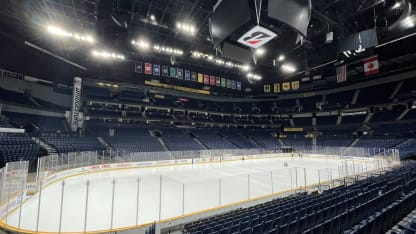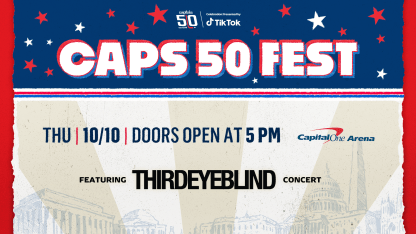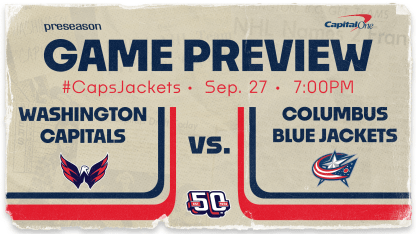Your Questions Answered as Predators Operations Team Reinstalls Ice at Bridgestone Arena for 2024-25 Season
Your Questions Answered as Predators Operations Team Reinstalls Ice at Bridgestone Arena for 2024-25 Season
Nigel Schnarr, Senior Director of Ice Operations, Responds to Smashville’s Queries as Operations Team Prepares Ice Rink for Game Day

Upon returning to 501 Broadway after the extended holiday weekend, the Nashville Predators’ front office noticed a significantly colder atmosphere than what they had experienced over the past few months.
And for good reason.
With the 2024-25 NHL regular season just over five weeks away, the operations staff at Bridgestone Arena spent Tuesday hard at work on their biggest offseason task – reconstructing the 200-foot frozen playing surface from the ground up.
The ice is going back in at @BrdgstoneArena nature is healing pic.twitter.com/b9mH2IDtas
— Nashville Predators (@PredsNHL) September 3, 2024
Naturally, the critical job is overseen by Nigel Schnarr, the Senior Director of Ice Operations, who is entering his 11th season with the Predators. With his vast experience and intriguing insider knowledge, we approached Schnarr with some of your common questions about the extensive process. This includes everything from the ice temperature to the massive amount of water used throughout the process.
Let’s get right into it:
What is the step-by-step process to making the ice at Bridgestone Arena?
We began with a concrete slab, which we began to freeze yesterday when the temperature was around 70 degrees Fahrenheit at 1:00 PM. By this morning, we managed to lower the temperature to 16 degrees. Today, our plan is to seal the concrete slab. I initiated a flood on it using a fire hose. Later, we will use white paint to cover the slab with three to four layers, ensuring the concrete is completely hidden. We will then seal the paint with five layers of plain water. Once this is complete, we will proceed to mark and hand-paint all the blue and red lines, face-off circles, hash marks, and goal creases. We will then place our logos in the neutral zone and four corners. As a final touch, we plan to place the Pred Head in the center of the ice.
What are some unique challenges that come with maintaining ice in Nashville, Tennessee?
The primary obstacle we face is the external weather conditions. High humidity significantly affects the rate at which we can freeze the water. Occasionally, we’ve been forced to wait because the freezing process is slower than expected, which typically occurs when the air has excessive moisture.
How cold does the building need to be to keep the ice frozen?
We have the ability to adjust the air temperature in the building due to the heat being drawn from beneath the ice. Once we place a floor atop the ice for a concert or event, it becomes insulated, preserving a surface temperature of 24 degrees on the ice. Once the ice is uncovered, we can reduce the temperature slightly more. We attempt to maintain a balance in temperature fluctuations, trying not to exceed 70 degrees when covered and typically not going above 62-63 degrees when uncovered.
How cold is the ice?
Typically, we aim to maintain the air temperature for games around 56 degrees Fahrenheit, while the surface temperature might be approximately 19 degrees. This can make the ice somewhat brittle. If it becomes too cold, the ice can become excessively brittle, increasing the risk of chipping during a hard cut. Therefore, we attempt to slightly warm up the ice to prevent this. After warm-ups, we apply heat to the ice during resurfacing. By the time the game starts, the surface temperature is ideally around 22 to 22.5 degrees. If the temperature exceeds this, reaching 24-25 degrees, players may experience the sensation of sinking into the ice.
Do you take feedback from the players into account during the season?
Typically, I aim to touch base with them. However, I follow the principle that no news is good news. So if they keep silent and I observe that the ice is in good condition and skating is smooth, I will continue my routine. But if they start mentioning problems, like the ice being slow, sluggish, or overly snowy, I typically adjust by making it slightly colder.
It’s also crucial to consider factors like an intensely hot and humid day. This weather can generate a significant amount of snow on the ice during a game, which can become sticky and almost freeze to the ice. This could affect the game by the end of the period, causing the puck to bounce during a long pass. Most of the time, this is the primary issue they bring up.
How many gallons of water does it take to create the ice?
While I’m uncertain about the precise amount, I am aware that it requires significantly more than 20,000 gallons of water.
How much paint does it take?
“We utilize one-gallon boxes of paint, consuming about 10 of them, which equals nearly 10 gallons of white powder. This powder is combined with water in a ratio suitable for a 150-gallon tank. Typically, we apply about three to four coats of this mixture.”
How do you get the lines painted on perfectly straight and the faceoff circles perfectly round?
Some of our designs are hand painted, and we also use a tool known as a paint stick. This involves a gallon of paint in a bag that you rest on your shoulder. The stick attached to this bag ends in a sponge that’s roughly two inches wide – the same width as the goal lines or hash marks. This setup allows you to regulate the flow of your paint. To ensure straight lines, we use a string to map them out. When painting circles, we employ a cable. One person stands at the center of the soon-to-be circle, where the face-off dot is located, while holding a cable that extends around 15 feet. They then keep the cable taut as they walk in a circle, creating a flawless two-inch circle or straight line.
How many people work on the ice year-round?
At Bridgestone Arena, I have two full-time employees who work with me all year round. On top of that, our director of building operations is also a certified ice technician and assists us. We also have a game day crew comprising typically of 12 to 14 individuals. Around 11 of these crew members skate during the TV breaks to clear the snow from the ice. Of course, our team also includes two Zamboni drivers.

On March 23, 2024 in Nashville, Tennessee, Nigel Schnarr, the Director of Ice Operations for the Nashville Predators, was seen checking the ice during the intermission of an NHL game. The game was held at Bridgestone Arena and was against the Detroit Red Wings.
© John Russell
How did you end up in this role?
I’ve been here for my 11th season, though my total experience in the ice industry spans around 20 years. My journey began at A-Game Sportsplex in Franklin where I got acquainted with the team here. They needed a Zamboni driver for game days and invited me to join. Initially, I worked part-time only during game days, but I soon fell in love with the job. Being a fervent hockey fan, it’s wonderful to be part of the industry. If we don’t perform our duties, the games can’t happen. So, usually, everything begins and concludes with us.
How do you learn how to maintain an ice rink?
Much of the learning in this field is hands-on and gained through experience. However, there are also educational resources available, such as classes taught by certified ice technicians like a few of us here today. Organizations such as the U.S. Ice Rink Association offer an educational program with various types of classes. These include ice painting and lessons on ice maintenance, edging, and how to maintain both a flat sheet of ice and sample sheets, among other things. One of the more challenging aspects is refrigeration, as it involves understanding the complex flow of air and heat, which varies from one building to another.
Is there collaboration with other NHL teams in solving ice problems?
We recently wrapped up our NHL facility meetings where we divided into groups according to our respective climate challenges. Teams from hot and humid areas, like us, had separate discussions, essentially networking sessions. We shared common problems and potential solutions. It’s universally acknowledged that Edmonton and Calgary have excellent ice, but their strategies are not applicable to us. They operate in a cold and dry climate for most of the year. Their use of humidification systems to add moisture in their buildings doesn’t align with our needs, as we strive to extract as much moisture as possible from our facility.
Did you work on the ice at Nissan Stadium? How was that process different?
The League managed the event, with my assistance. Due to continuous rain in the preceding nights, we had to adjust our ice-making strategy. Usually, at Bridgestone Arena, we only need an inch and a half of ice from the concrete to the surface. However, at Nissan, we had to create over three inches of ice to avoid any loss, learning from our experience in Dallas ahead of the 2020 NHL Winter Classic. To ensure we had extra leeway in case of rain, we built the ice as thick as possible.
Additionally, we used four by fours, also known as gators, fitted with large squeegees on the front to push off the water. We removed the endboards on both sides and ran the gators back and forth. This process took up two nights of continuous work.
Despite the challenges, we were fortunate that the ice was in excellent condition on game day. The only problem we encountered was a bit of wind that caused some puddles on the ice. However, these dried up just in time for warmups.
I had the opportunity to drive one of those mini Olympias during the game, which was a fun experience. Our main strategy was to scrape off a layer of ice before warmups, without adding any water.







